5 signs your lawn needs urgent repairs
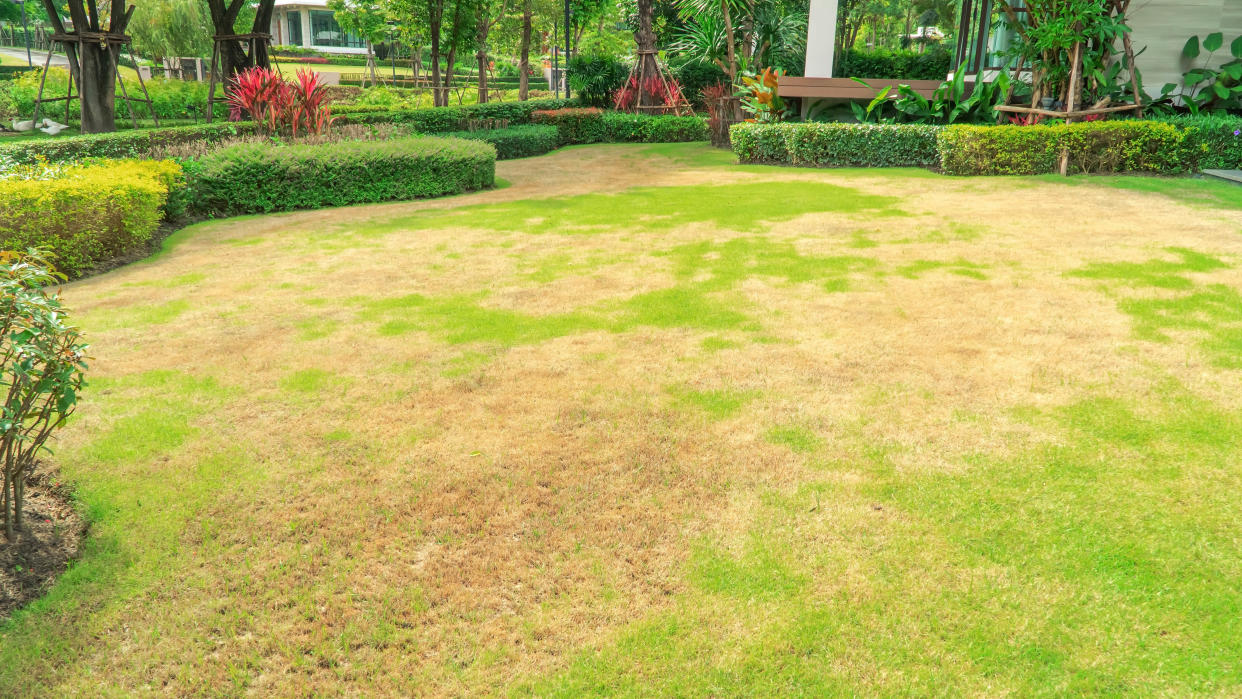
With summer on the way, our lawns need all of the care and attention they can get. You need to know the best time to water your lawn, while watching out for these lawnmower mistakes, unless you’re practicing No Mow May of course. But, sometimes it seems our lawns continue to struggle no matter how much time and effort we put into them. Perhaps bald patches of soil are abundant, or the grass just isn’t thriving like it used to.
Wherever the case, there are all kinds of signs that your lawn isn’t as healthy as it used to be, some of which are more obvious than others. If you’re unsure of your lawn’s current condition, we’ve pulled together five signs that your lawn needs urgent repairs. We will cover symptoms of each problem and look at the best ways to deal with them too, so you can give your grass a well-needed health boost and help it flourish in time for summer.
1. Disease has taken over
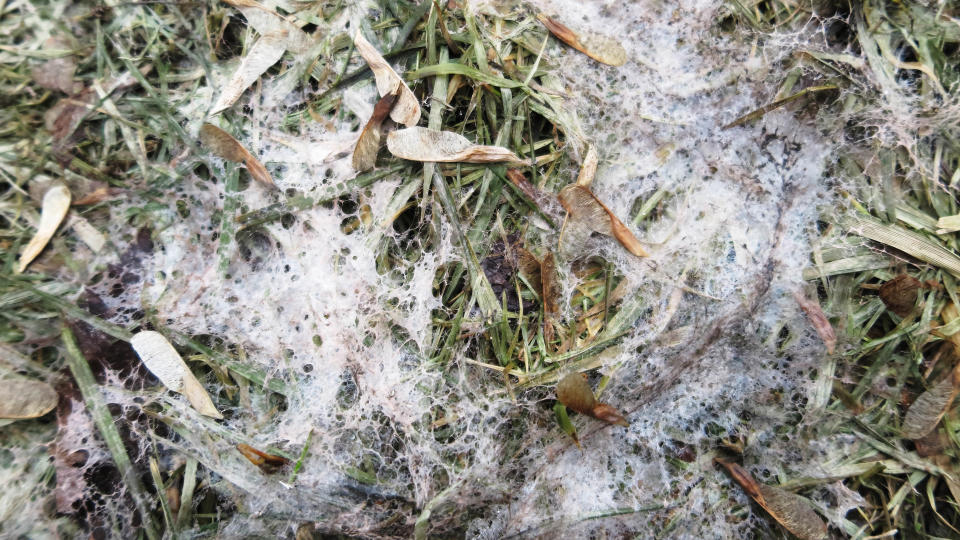
All kinds of disease can pop up when it comes to lawn care: red thread, brown patch and snow mold are all common and unwelcome visitors. Fungal growth is a frequent occurrence, particularly when conditions are overly moist and warm. There’s all kinds of indicators that your lawn is facing a disease — some can cause discoloration, while others can create a visible substance on the surface. Root rot is a fungal disease in itself too, brought on by the roots being overexposed to water. The only indication of this is the grass will show signs of struggle, wilting, yellowing and eventually dying.
You shouldn’t ignore signs of disease in your lawn, even if they’re not obvious. The more established it becomes, the more difficult it can be to remove. In extreme cases, large sections of the lawn can be sacrificed as part of the removal process, resulting in long-term damage and lengthy repairs. If you suspect your lawn has succumbed to disease, you first need to confirm what disease you’re facing. You can either take a photo and ask an expert at your local garden center or refer to this list of common turf diseases with images from Michigan State University — here, once you know what you’re dealing with, you can select the relevant disease to learn all about it and how to deal with it.
The likelihood is you will need to purchase a relevant fungicide and make routine adjustments to make conditions less favorable for the disease, such as easing up if you're overwatering. As mentioned before, it can be very difficult to remove a lawn disease once established, so patience and persistence will be required.
2. Pests are abundant

Pests can quickly establish a home in your yard, and there are all kinds of unwelcome visitors to be aware of. Whether you’re dealing with moles, grubs or armyworms, these can all cause extensive damage to your grass. Before you know it, your grass can appear more brown than green, effectively ruined and needing serious repairs. So, if you suspect pests, you need to deal with them as soon as possible.
Any number of factors can attract pests to your yard. For instance, a thick layer of thatch can be particularly appealing to grubs — it protects them from predators as well as insecticides. What’s underground counts too; moles love to snack on earthworms, and your yard could simply be in the wrong place at the wrong time. Thick, healthy grass on its own can attract pests as well — the root system provides food for grubs. So it seems no matter what you do, pests are always a possibility.
You can tell pests are taking their toll on your yard from the damage they create. Grass will yellow and die or effectively be uprooted in the case of moles as they create molehills. You might even visibly see the insects at work. Once you know what you’re dealing with, you can apply a solution. Pesticides are available to target certain insects, such as BioAdvanced Season Long Grub Control ($21.98, Amazon). Changing the conditions of your yard can help ward off pests as well, such as by reducing the moisture and dethatching. There are, of course, ways to learn how to get rid of moles as well as five ways to keep moles out of your yard to protect it in the future as well.
If reseeding is necessary as a result of damage, it’s also recommended that you wait a few months between using a pesticide and planting fresh seed, otherwise the chemicals can impact the germination process. Always keep an eye out for pests, and act as soon as possible once confirmed — the sooner you act, the less damage your lawn will take.
3. Weeds are everywhere
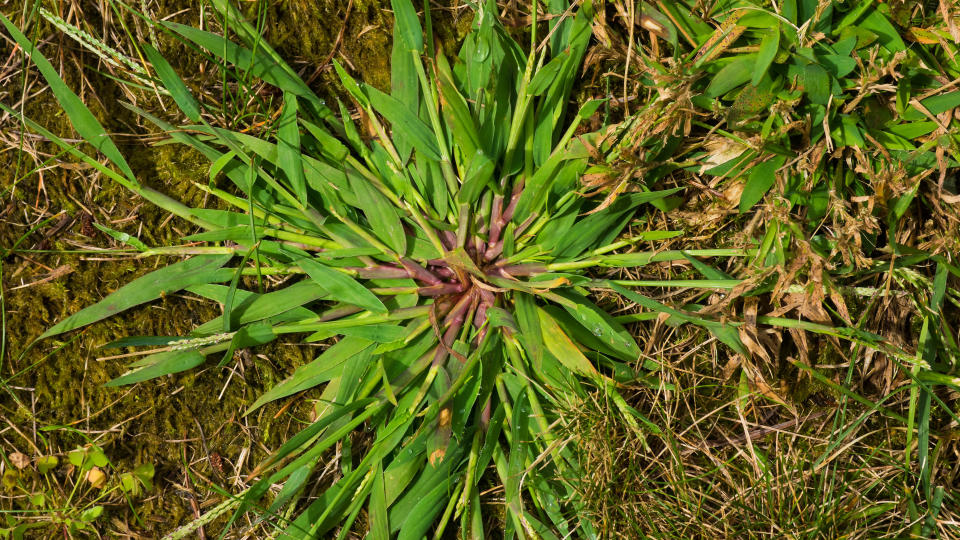
Weeds are something all lawn-carers must face. Crabgrass, dandelions and clover can each cause their own frustrations. But no matter how vigilant you are with weed removal, one can easily be missed, which soon turns into several. And with every weed that’s removed, an unsightly bare patch of soil is left in its place. So your lawn can quickly take damage, even if every care is taken.
Weeds come in all shapes and sizes and, because they’re so hardy, they can crop up in places you wouldn’t imagine, such as between pavement stones and from cracks in brickwork. Weeds are stronger and more invasive than grass, and should one take root, it can deplete the available nutrients in the soil and cause nearby grass to struggle. Weeds should be removed as soon as possible to prevent extensive damage to your lawn, and care needs to be taken to do this without spreading any seeds it has produced. Weed killers are available that won't harm your grass, such as Ortho WeedClear Weed Killer for Lawns ($17.67, Amazon). You can also buy a dedicated weed puller, such as Grampa's Weeder ($39.99, Amazon).
As well as removing the weeds on sight, you can deter weeds in the future by improving the health and thickness as well as distribution of your grass. Be sure not to mow it too short either — otherwise, weeds can access your soil more easily. Recurring weeds are one of the seven signs that you’re cutting your grass too short, so make sure your grass remains at 2 ? to 3 inches in height, cutting no more than a third away at a time.
4. Yellowing
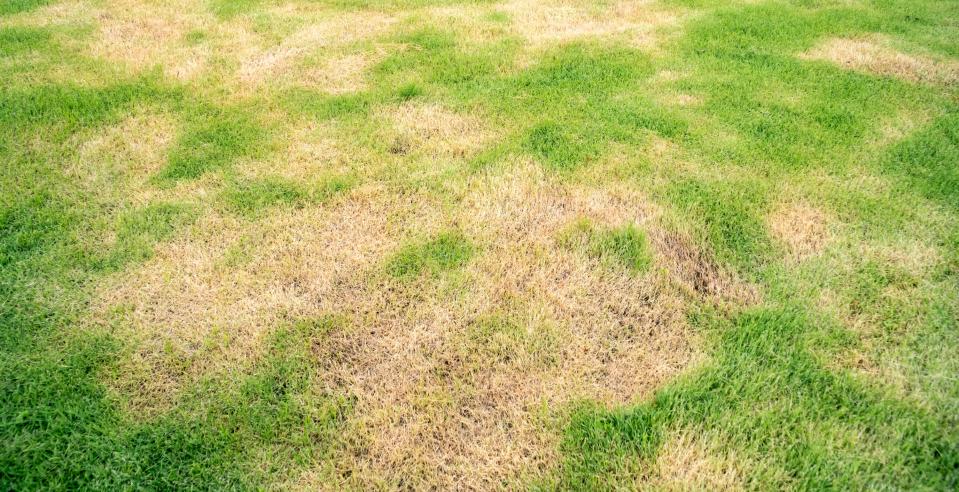
A yellowing lawn is never a good look, and it's not good news for the health of your grass either. Any of the above issues can lead to a yellowing lawn, but it can also be a consequence of poor conditions in general. We recommend buying a soil test kit, such as MySoil Soil Test Kit ($29.99, Amazon) to first confirm the conditions of the soil. Should it be lacking in any nutrients, such as nitrogen, phosphorus or potassium, you can make the necessary adjustments.
Consider your routine and habits as well. Your lawn should be receiving roughly an inch of water a week, according to experts, and a yellowing lawn can be an indicator of over- as well as under-watering. Check the conditions by driving a screwdriver into the soil; it should move through wet soil easily with moisture reaching 6 inches deep. But, at the same time, your grass shouldn’t feel ‘squishy’ when you walk on it a few hours after watering. Make sure you’ve got the right balance of water. For more detail, here’s how much you should water your lawn to keep it green according to the experts.
Fertilizer will help keep your grass green as well — it provides a nutrient boost to aid growth. Make sure you’re applying fertilizer as often as required, which will vary depending on the type you’re using. Don’t apply too much though, otherwise this can lead to fertilizer burn, which leaves scorch marks on the grass. For further info, check out how often should you fertilize your lawn and when to do it.
5. Bare patches
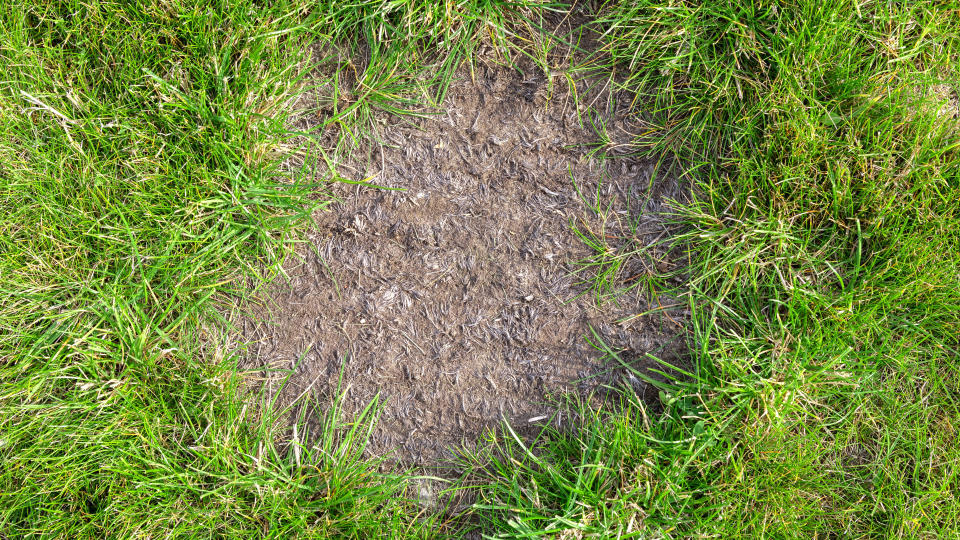
Bare patches can easily crop up in your yard. It can be a consequence of any number of reasons where the grass has died as a result and left an open patch of soil in its place. Something as simple as heavy foot traffic, pet urination or even improper mowing can lead to bare patches, as can weeds, disease or pests. So it’s no wonder if your lawn has ended up looking patchy and uneven.
You should deal with any bare patches of lawn as soon as possible. Not only does this look unsightly, it’s actually an open invitation for further weeds to populate your yard and spread. You can fill in any bare spots with grass seed or sod — whichever works best for your yard. Here’s how to plant grass seed for guidance on the best conditions and care.
It’s important that you factor in what caused this bare patch in the first place. Habits may need changing — i.e. averting foot traffic or taking more care with the lawn mower. If the patch has been caused as a consequence of pests or disease, you may not have solved the problem either. Further bare patches can continue to pop up, or those that exist may grow bigger, so address this before you start repairs.
